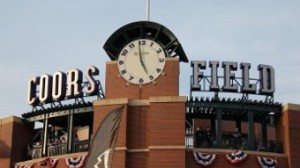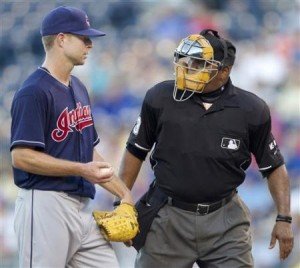Baseball: The Timeless Sport With A Clock Comments Off on Baseball: The Timeless Sport With A Clock
 If baseball is going to use a challenge rule with instant replay, the best place to find guidelines is with tennis.
If baseball is going to use a challenge rule with instant replay, the best place to find guidelines is with tennis.
Since 2006 the electric line call, known as the “Chase Review” has been used at the US Open.
Tennis has tried electronic line calling since 1974, but since 2006 the technology has been created by a system known in tennis as the hawk eye system.
Each player is allowed three incorrect challenges per set.
The average length of a challenge is about ten seconds.
In tennis, everyone in the stands is allowed to see the review and then the call stands.
In baseball we should use the hawkeye cameras to follow the ball at all times.
We also need to let everyone in the park see the hawkeye instant replays.
The amount of challenges is something that baseball is going to need to decide.
If we put it at three wrong challenges per game, will teams use it too often?
Since you have only five seconds to decide whether to challenge a call, then we need an official clock in each park.
If baseball started using a clock, we could also shorten the length of the games.
If we had a clock for replays, then we would have a clock to follow MLB rule 8.04, which reads:
Rule 8.04 When the bases are unoccupied, the pitcher shall deliver the ball to the batter within 12 seconds after he receives the ball. Each time the pitcher delays the game by violating this rule, the umpire shall call “Ball.” The 12-second timing starts when the pitcher is in possession of the ball and the batter is in the box, alert to the pitcher. The timing stops when the pitcher releases the ball.
violating this rule, the umpire shall call “Ball.” The 12-second timing starts when the pitcher is in possession of the ball and the batter is in the box, alert to the pitcher. The timing stops when the pitcher releases the ball.
The intent of this rule is to avoid unnecessary delays.
A clock would be used for replays set at 30 seconds. A clock would be used for challenges at five seconds, and a clock would be used for pitchers rule 8.04 at 12 seconds.
We could even use the clock for the time spent between innings. Cut it down to 90 seconds, and we could cut another 18 minutes off the entire length of a game.
Baseball has prided itself as a timeless sport, but as we move into the future, a clock will be the new innovation we will use for the good of the game.